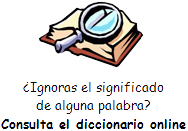Is Teaching Writing As Important
As Teaching Reading?
When educators think of literacy -- the ability to read and write --
they often place more importance on students’ abilities to read and
fully understand a piece of writing.
But experts say critical and creative writing skills are equally
important. And, they say, they are too often overlooked in the classroom.
Compared to reading, writing is more active. It helps students be
independent thinkers, take ownership of their stories and ideas and
communicate them clearly to others, says Elyse Eidman-Aadahl. She heads
the National Writing Project, which offers help for teachers who want to
push students to write more.
Eidman-Aadahl said, “Unless we want an education system just focused on
making people consumers and not focused on helping them be producers,
this emphasis on reading only -- which does happen in so many places --
is very short-sighted.”
She said students’ writing work now usually centers on examining a text,
instead of presenting a new idea. Writing, she said, should be “the
central thing you’re learning. Not writing on a test, not writing to
demonstrate you’re learning what someone has taught you....”
Writing improves reading skill
Teaching reading together with writing improves both skills, says
Rebecca Wallace-Segall, who heads a New York City writing center,
Writopia Lab.
She said writing affects a person’s ability to read. More than 90
percent of young people in the Writopia program do not trust their
writing abilities when they start, Wallace-Segall said.
But she said they learn to enjoy the writing process and become more
effective readers, too.
Eidman-Aadahl said employers today seek workers “all the time” who can
write well. Digital tools increasingly mean that people are “interacting
with the internet through writing,” she said.
Young people are already writing all the time -- through text messages,
emails and on social media.
Eidman-Aadahl said every young person today is a writer if they are
connected to the internet. So, she added, “we have to help them do it in
the best, most responsible, critical, prosocial way.”
Working through problems by writing
Supporters of writing-centered teaching add that writing empowers young
people.
“When students own their voices and tell their stories, they become not
only stronger and more confident writers, but also stronger and more
confident individuals,” says Ali Haider. He is director of the Austin
Bat Cave, a creative writing center in Austin, Texas.
Wallace-Segall said that writing also helps students work through
difficulties they face in life. Writing lets them work through their
problems “subconsciously,” she said.
“They’re not writing a story about a difficult father or directly about
a bully in class, but they are creating a fictional scenario that might
feel distant enough for them to go deep into it.”
Teaching students to write well can have an effect on the larger world,
notes Dara Dukes. She leads Deep Center, an organization in Savannah,
Georgia that works with young writers to share their stories with
policymakers, judges, politicians and police officers.
Dukes said, “...Those adults can see that the stories they’re telling
themselves about those young people are often wrong and doing a lot of
harm in the world.” |
![]() ).
Utiliza el botón derecho del ratón y "guardar enlace" para descargar el
fichero a tu PC, tablet, Smartphone, etc.
).
Utiliza el botón derecho del ratón y "guardar enlace" para descargar el
fichero a tu PC, tablet, Smartphone, etc.![]() Escucha el audio
Escucha el audio



